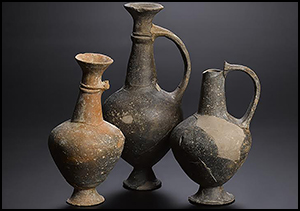Published online by Cambridge University Press: 21 November 2016

The Base Ring juglets of Late Bronze Age Cyprus have long been associated with opium due to their hypothetical resemblance to inverted poppy heads. Analysis of organic residues on Base Ring juglets from Cyprus and Israel, however, showed no trace of opium; instead, the vessels had contained a variety of perfumed oils. The analytical results are supported by textual evidence attesting to a lively trade across the eastern Mediterranean in aromatic substances and compounds, rather than in opium. The poppy-head shape of the Base Ring juglets was not a reference to their contents.